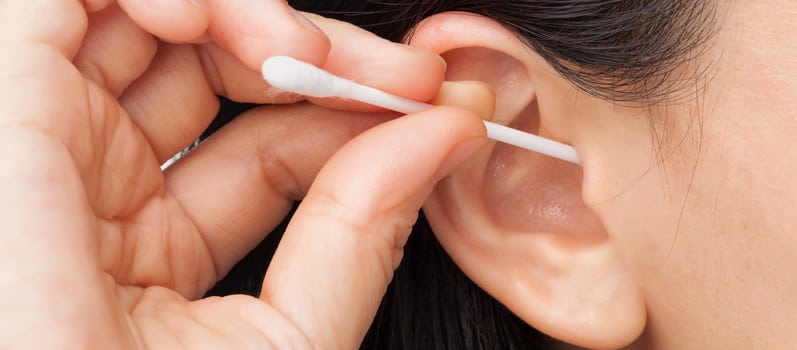
The Right Way to Clean Your Ears
Your body uses earwax (cerumen) to self-clean, protect, and lubricate your ear. The earwax that you may see on your ear is old and has moved to that spot after jaw motions, like chewing, transport it there.
As much as you may want to clean this earwax thoroughly, it takes careful steps to ensure that you do not damage your eardrum or affect your ability to hear.
What to Avoid
Contrary to popular belief, it is not recommended to stick a cotton swab inside your ear to clean it. This can actually push the wax in deeper and can damage your ears. In fact, blockage is one of the most common causes of hearing loss. Commercial ear candles should also be avoided, because they can contribute to burns, obstruction, or perforation of the ear.
What to Use
To clean your ears, wash the external part of your ear with a clean cloth. You can soften earwax blockage with a few drops of mineral oil, baby oil, or hydrogen peroxide. If you have trouble softening the wax or are prone to frequent bouts of impacted wax, contact your doctor. You may need to visit the doctor regularly to have the earwax removed.
Seeing a Doctor
You should see a doctor to evaluate your earwax if you experience any of the following symptoms:
• Hearing loss
• Itching
• Discharge
• Odor
• Earache
• Sensation of a plugged ear
To help remove earwax, your doctor may use an irrigation kit or a syringe technique with water and saline.









